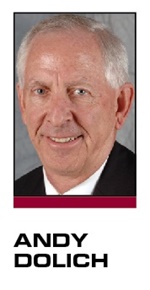British tabloid sportswriter Bill “Don’t call me William” Shakespeare stirred up the debate on the value of sports promotion when he wrote, “The Play’s the Thing.” He was sent over to the States to cover Bill Veeck’s midget caper with the Chicago White Sox in August 1951, and the world of sports promotion was never the same.
Veeck, the godfather of major league baseball promotion, said: “It isn’t enough for a sports promotion to be entertaining or even amusing; it must create conversation. When the fan goes home and talks about what he has seen, he is getting an additional kick out of being able to say he was there. We are trying to get the whole city in a frame of mind where they are asking, ‘What’s that screwball going to do next?’ A promoter deals with illusion, and illusion is a distorted mirror, which can throw back your own reflection.”
Promotion is a state of mind in the creator long before it becomes a state of mind in the fans or media.
I worked for the team with the worst record in the history of the NBA (1972-73 Philadelphia 76ers who went 9-73). In our “Year of the Uniform” youth promotion, we gave out a facsimile of the team’s uniform (jerseys, shorts, jacket, socks, gym bag and sneakers) over the course of the season. Promotions are inexpensive thank-yous for your most loyal fans and build bridges to future season-ticket holders.
What works best and why
Baseball is the Mount Everest of promotions. Entertaining the home fans for 81 games demands that marketers spice up games with more than runs, hits and errors. Baseball depends on walk-ups and group sales because of smaller season-ticket bases and long home stands. Research and development is done through minor league teams that are always experimenting with how zany their promotions can be.
The NBA game is focused on sizzle. Much of the league’s marketing and promotional foundation is based on its superstar players. The NBA pours resources into dance teams, video board features and professional entertainment at halftimes. Merchandise giveaways are an important tool for a number of NBA franchises struggling at the gate. Fans dressed as empty seats are toxic. If you can change fans’ apathy through free T-shirts or caps, you are increasing food and beverage sales and creating hundreds of walking billboards for your team throughout the market.
Hockey is a problem for promotional events. In many NHL arenas, the No. 1 promotion is watching the Zamboni clean the ice. Hockey is a traditional sport with incredibly loyal fans that doesn’t require much promotional gimmickry.
Pro football is where every game matters. Halftimes are for the fans to visit the concession stands and the facilities so as not to miss the action. This is the No. 1 sport relying on TV to carry its promotional message. Tailgating is football’s most cherished promotional vehicle.
Everything in moderation
Fans come to see the greatest athletes in the world do their thing in an unscripted setting. When teams overload those fans with insipid play, intruding promos, ear-splitting non-stop noise, mascot mania, useless free merchandise and Big Brother directions for cheering, they can damage their fan base for years to come.
And not everyone is a fan of in-game entertainment. Terry Francona, former manager of the Boston Red Sox, had this to say on the Washington Nationals’ Racing Presidents: “We don’t need to have [inflatable] president races or [bottles of] mustard racing ketchup. Our fans like our baseball, and I actually really think that’s cool. Nothing against mustard.”
What the future holds
It has been said that the past is prologue. Consider that one of baseball’s first giveaways was an ashtray in the shape of Wrigley Field by the Chicago Cubs. It won’t be long before holograms will be sent by teams containing highlights, merchandise items and player avatars.
And the rise of social media provides a perfect vehicle for promotions as teams search for that balance.
Andy Dolich (andy.dolich@gmail.com) has more than four decades of experience in professional sports, including executive positions in the NFL, MLB, NBA and NHL.




